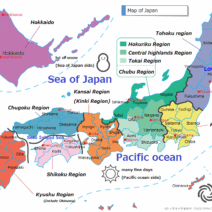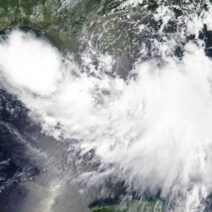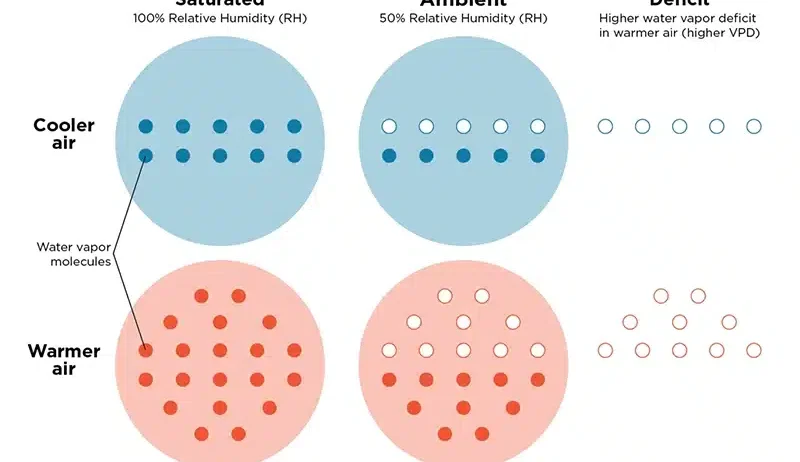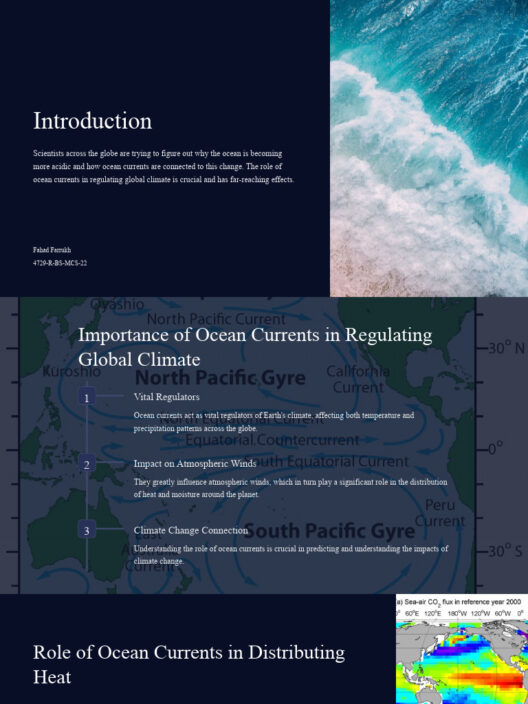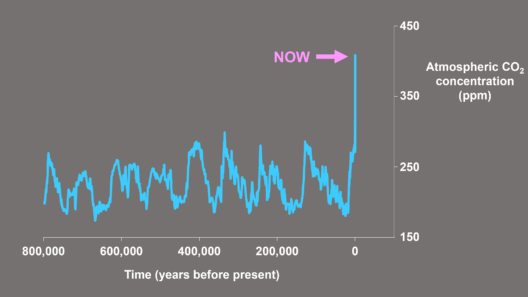As we navigate the intricate web of environmental phenomena influenced by climate change, one often overlooked aspect warrants our attention: Vapor Pressure Deficit (VPD). This term may sound esoteric, but its implications are profound and impactful. What if I told you that the subtle shifts in atmospheric moisture can dramatically alter our ecosystems? The silent yet potent threat posed by global warming on VPD could challenge our understanding of agricultural productivity, ecological balance, and even human health.
To grasp the significance of VPD, we must first elucidate the concept itself. Vapor Pressure Deficit refers to the difference between the amount of moisture the air can hold and the actual amount of moisture present. A lower VPD indicates more humidity, while a higher VPD signifies drier air. In a world grappling with increasing average temperatures and erratic weather patterns, the dynamics governing VPD are in a state of flux. But how exactly does global warming influence this critical atmospheric variable?
Global warming leads to elevated temperatures, which can enhance the air’s capacity to hold moisture. A direct consequence of this phenomenon is a potential increase in VPD, especially during dry seasons. Consider the implications: as temperatures rise, the air becomes thirstier, extracting moisture from plants and soil at an accelerated rate. This not only jeopardizes plant health but, by extension, the food production systems that depend on these plants.
Farmers are already facing the challenge of adapting to these changes. The escalating VPD can induce physiological stress in crops, impairing their ability to photosynthesize effectively. A playful question arises: How can we cultivate crops successfully when the environment itself seems to be a relentless adversary? Without adequate moisture, plants struggle to maintain turgor pressure, leading to wilting and lower nutritional yield. This vicious cycle could threaten food security as global populations continue to swell.
Furthermore, the effects of increased VPD aren’t restricted merely to plants. Livestock, too, are susceptible to these climatic changes. High VPD conditions can provoke heat stress, compelling animals to expend energy on cooling themselves rather than growth and reproduction. This scenario creates a cascading effect: diminished livestock productivity directly impacts dairy and meat supply, exacerbating the looming food crisis.
Moreover, the increase in VPD is not solely an agricultural concern. It stretches into broader ecological implications. Habitats are fragile; a shift in moisture levels can disrupt intricate interspecies relationships. For instance, the delicate balance of wetlands could be compromised, resulting in habitat loss for countless species. What challenges do wildlife face when their environmental conditions become inhospitable? The answers lie in dwindling populations and altered migration patterns, subtly nudged by rising VPD levels.
On the other hand, the correlation between VPD and plant pathogens is another ominous thread in this complex tapestry. A rise in atmospheric pressure deficit corresponds to a higher incidence of certain diseases. As plants become stressed due to inadequate moisture, their innate defenses weaken, making them prime targets for invasive species and pathogens. Thus, the very plants that might mitigate carbon levels in the atmosphere become increasingly vulnerable under the strain of climate variability. How do we combat these growing threats while also striving for sustainability?
In contrast to agriculture and wildlife, the human dimension of increased VPD is equally disconcerting. From a public health perspective, higher vapor pressure deficits can exacerbate respiratory ailments. Drier air is notorious for carrying higher concentrations of pollutants and allergens, which can lead to a range of health issues in populations already burdened by climate-related stressors. The challenge becomes not only how to manage our environment but also how to protect human health in these rapidly changing conditions.
As we endeavor to address these pressing issues, innovative solutions become paramount. One approach lies in enhancing water conservation techniques across agricultural landscapes. Implementing smart irrigation systems, rainwater harvesting, and soil moisture sensors can mitigate the adverse impacts of increased VPD. Additionally, cultivating resilient crop varieties that can withstand shifting humidity levels may offer a glimmer of hope. Can we rise to the occasion and innovate our way out of potentially calamitous scenarios?
Moreover, restoration efforts targeting native ecosystems can bolster the resilience of both flora and fauna against the impacts of rising VPD. By fostering biodiversity, we can create a robust network that can adapt to changing environmental conditions. This leads to a critical question: Are we prepared to invest in the long-term viability of our planets by prioritizing biodiversity and ecological balance?
In conclusion, as we confront the multifaceted repercussions of global warming on Vapor Pressure Deficit, it becomes apparent that our response must be holistic and decisive. The interplay between atmospheric moisture, agriculture, wildlife, and human health is intricate and significant. The climate crisis prompts an urgent call to action—a challenge that requires innovative thinking, cooperation, and a commitment to sustainability. The path forward is fraught with uncertainty; however, understanding and addressing the unseen threat of rising VPD might just be one of the pivotal steps in fostering resilience in our ecosystems and securing a sustainable future.
